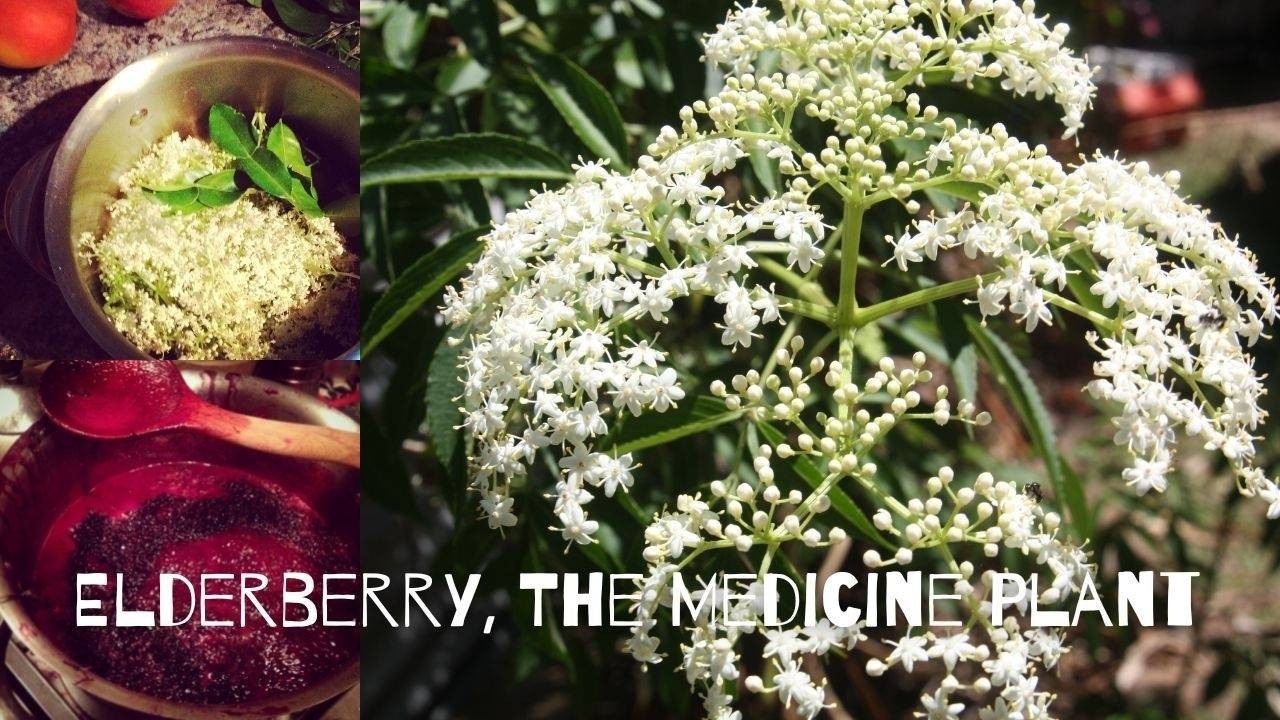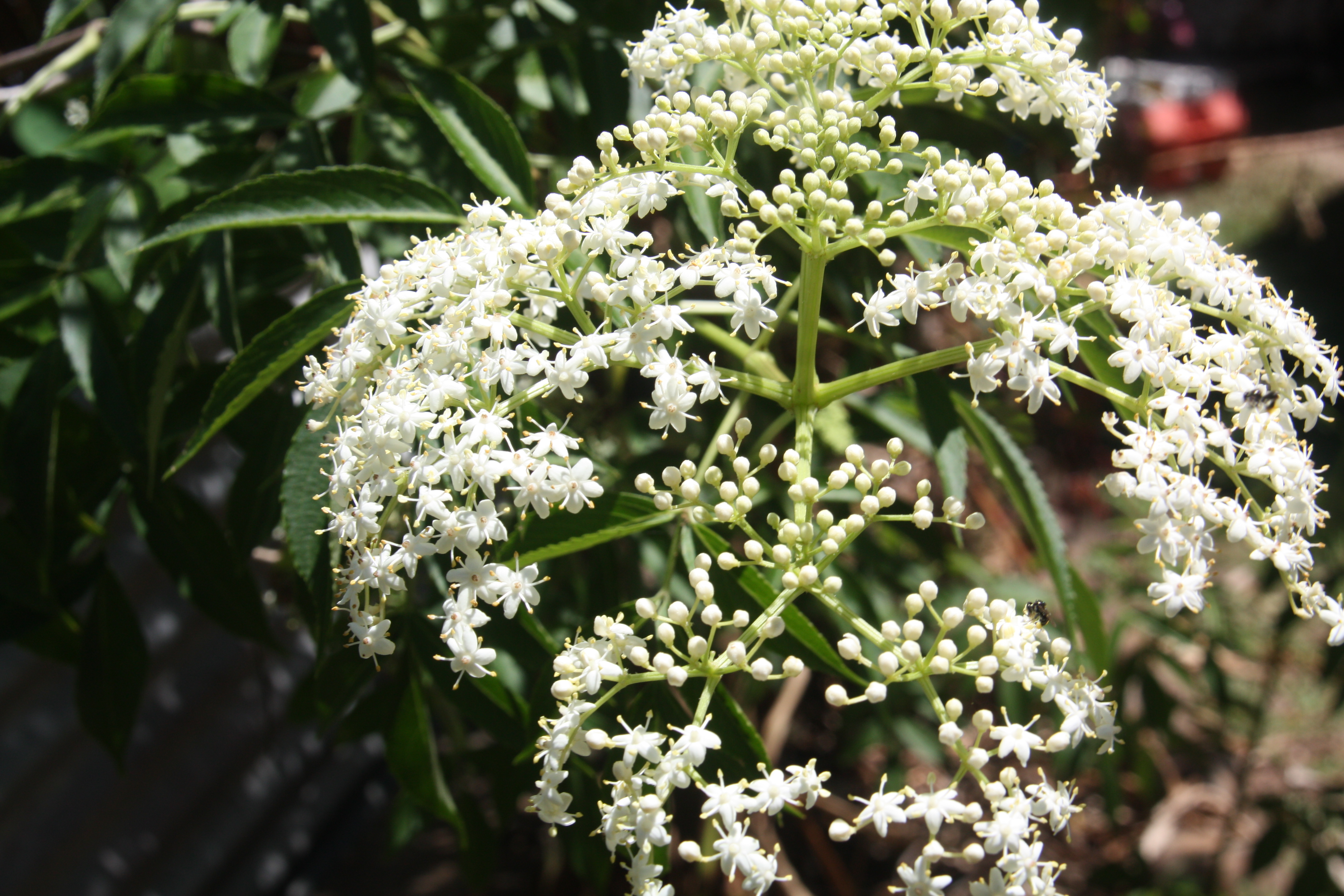Elderberry, The Medicine Plant
Jun 16, 2022
I recently took out all the frozen berries that I had harvested over the last few months and made elderberry cough syrup. It's a yearly kitchen session that I look forward to once I have loaded up a bag in my freezer ready for the colourful experience!
This time, it was an extra intuitive moment, as the next day I went down with 'the flu' and had this yummy anti-viral in my medicine tray to soothe my throat and get me back on my feet.
It is truly a special plant that has grown abundantly in my garden since my grandmother passed it on to me at the beginning permaculture journey.
It was love at first sight. I walk went to walk up to her front stairs and spotted the shrub in a garden. The large display of white star-shaped flowers. I asked her what it was and she mentioned it was given to her years ago and had never really known its name until a neighbour from New Zealand had spotted it and asked her for the flowers to make a cordial. Like all good neighbours, she did the harvest and returned with a bottle of Elderflower cordial which happened to be upstairs in the kitchen awaiting us to taste some!
And so it came to be, my relationship with this plant began. It certainly made its way to my top 32 incredible edible plants featured in my book that I recommend all earth lovers could start within their gardens.
In this blog, I will share some special notes about Elderberry so you can get it growing in your garden, plus the recipe I use to make my elderberry cough syrup each season. There is so much more that I could write, like back in the day, men would take their hats off as they passed by this tree out of respect for it and that the thick stems are used to make pipes and flutes. Let's start here at least and if you join my mailing list and socials, I will share more over time.
ABOUT ELDERBERRY
Common Names: Elder, Black Elder, Pipe Tree, Lace tree
Origin: Europe
A perennial shrub/tree 2-6m tall, with rough bark. Leaves
are divided into five elliptic, serrated leaflets 3-9cm long. Umbels of creamy 1/2cm star-shaped, sweetly perfumed flowers on terminal stems, look like dainty, lacework and attract bees and birds. Shiny dark purple berries, 1/2cm diameter, set in clusters. Rich in vitamins A, B1, B2, B3, B4, B5, B6, C, H (biotin), minerals, calcium, copper, iron, magnesium, phosphorus, potassium, and sulphur. Use stems and leaves as mulch, to improve soil structure and add to the compost heap. A decoction of leaves kills aphids and caterpillars and repels mosquitoes and flies. Bark makes black dye, roots and leaves make green dye and the berries make a purple to blue coloured dye
By seeds, or stem cuttings. Regular pruning after fruiting, or before spring, will keep the bush in good shape and the flowers and fruits in good reach for harvesting.
Soil:
Adaptable to a wide range of soils and climates
Partial shade to full sun
Keep moist
EAT:
Do not eat uncooked. Stewed berries with a sweetener make delicious pies as well as jams, jellies, cakes, wines or a substitute for dried currants. Flowers make lovely garnishes on salads, sweets, drinks and floating in soups. Elderflower cordial, made by boiling the flowers with lemon juice and soaking overnight makes a refreshing summer drink. Flowers dipped in the batter are a delicacy. Pick berries ripe and place a fork behind the berries to pull them off with ease (freezing makes it easier).
ELDERBERRY COUGH SYRUP RECIPE
Ingredients
- Elderberries (frozen for ease of recipe)
- Optional spices; ginger, cinnamon, clove
- Honey
- Boiling pot with lid
- Large spoon with draining holes
- Glass bottle for storage
- Funnel
Method
1. Place frozen berries into a large pot and add water to cover.
2. Bring to a boil and let reduce by 50%.
3. Leave steep overnight with the lid on.
4. Remove the berries so the liquid is remaining.
5. Bring to the boil again and if you wish, add some ginger, cinnamon and clove to your taste (optional).
6. When warm but not boiling, add equal volume 1:1 with pure local honey (thank you bees!) *don't boil honey.
7. When well mixed, pour into a glass storage bottle with a funnel and refrigerate for when needed.
8. Drink slowly, up to 30-40 ml daily to coat your throat.
Note: it will ferment if left in heat which could potentially make elderberry champagne or explode the bottle. I have experienced both, so be aware!
Remember to source your health advice from a certified herbalist. This is my personal experience that worked for me and my family and not medical advice.
In my book the Incredible Edibles Tropical Superfood Guide, I have included two additional recipes for Elderflower & Kaffir Lime Iced Tea and Elderberry Jam.
If you would like to spend a day with me in my garden to learn how to grow, harvest and prepare this plant + 31 others, come join me for my 1 Day Incredible Edibles Workshop where we get our chef aprons on for an all-day homegrown gardening and feasting session!











